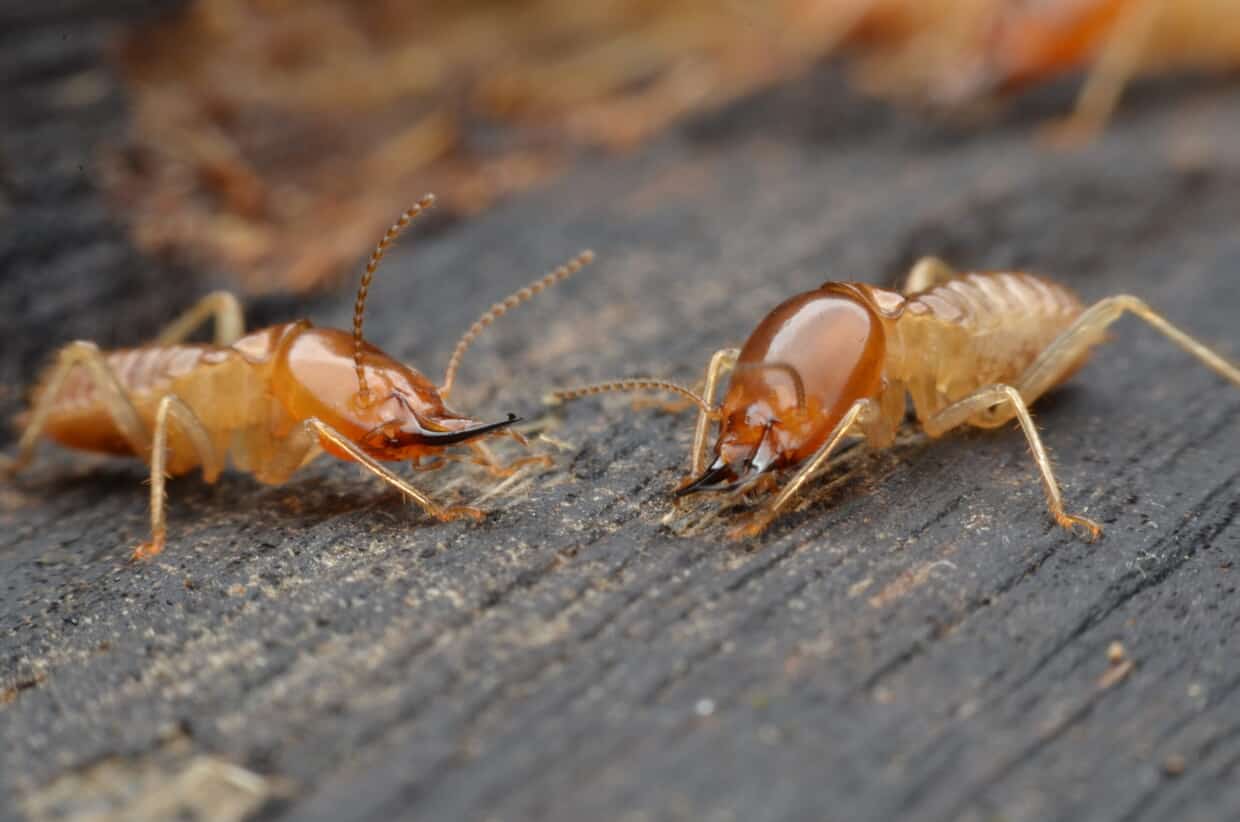
Difference Between Termite Damage & Wood Rot
Termites live and feed on wood, causing damage, weakening, and deterioration to homes, businesses, and properties across Phoenix. Termites operate in the background, often going unnoticed until it is too late. Termite damage can also be mistaken for common wood rot, and vice versa. Understanding whether you are dealing with termite damage or wood rot will determine how you address the property damage or termite infestations as well.
The first step is to know the signs of termite damage and wood rot when they occur. As termite damage and wood rot are similar in appearance, any indications of termites will help you make a quick conclusion. From there, you will be looking at either repairs to damaged wood and other collateral damage, or additional termite treatment services to eradicate the termite colony.
Signs of Termite Damage
- Buckling, swollen wood floors/ceilings/drywall
- As termites build out their mud tubes, the stored moisture and resulting wood warp can be significant enough to cause buckling in wood floors and drywall ceilings or walls
- Bubbling paint
- Similar to a bulging floor, drywall, windows, or doors, termite mud tubes can cause paint to bubble due to excess moisture
- Exposed wood damage (fallen trees)
- You can examine exposed wood from around your property, such as fallen trees, to see if there is a potential termite colony near your home
- Hard to open windows and doors
- Termites build up moisture within their tunnels to sustain themselves. This moisture can build up and warp wood, causing windows or doors to tighten
- Clicking sounds or chewing noises
- Light clicking or chewing noises coming from the walls is a sign that a termite colony has taken hold in your home
- Flying termites or discarded wings
- Male and female termites will leave the nest to mate and establish a new nest.
- If you notice flying termites or find discarded wings, termites may be establishing that nest at your home
- Mud tubes
- Finding active mud tubes (also referred to as galleries, or tunnels) is a sure sign of termite activity
- Droppings (frass)
- As termites drop feces, they push it out of the mud tunnels, resulting in piles of frass that can resemble sawdust typically ranging from light to dark brown in color
Spotting Wood Rot
Wood rot is primarily caused by water leaking and being absorbed by wood. Being in the desert, this isn’t as common as it is in other places that see more rainfall and have more bodies of water. However, homes in the Phoenix area are not necessarily built to withstand moisture in extreme events, leaving some homes more susceptible than others.Signs of Wood Rot
- Buckling, swollen wood floors/ceilings/drywall
- Cracked or degraded window frames
- Hard to open windows and doors
- Mildew growth (at all) particularly near windows & doors
- Dripping, stagnant, or running water near doors or building foundations
- Signs of pests that utilize sources of water for survival
- Discoloration, soft spots, or paint bubbles on walls
